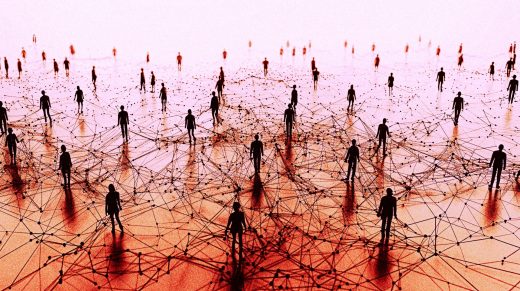This is how DEI will change in 2025
This is how DEI will change in 2025
From relying more heavily on employee resource groups to shifting focus to belonging, these are four of the ways diversity, equity, and inclusion will change in the next year.
BY Mita Mallick
As we head into 2025, we will see more companies reevaluate their diversity, equity, and inclusion efforts. Boeing Co, Ford Motor, Harley Davidson, Lowe’s Cos, Walmart, and more, have shared that they are eliminating or pivoting their DEI efforts. Trump’s promise to crack down on DEI initiatives as he enters his second term is also creating a culture of fear, especially for those companies who are also government contractors. There will be more companies canceling their DEI efforts in the months to come, and others who choose to rebrand or rename the work.
Here are some ways we will see companies approach DEI in 2025.
Pivoting to Belonging and Culture
Some companies will rebrand DEI work to be centered around belonging and culture. While some leaders may feel uneasy about continuing to use the words diversity, equity, and inclusion, belonging can spark more feelings of comfort. When we feel like we belong in our workplaces, we are happier and more engaged. We feel like we are accepted by our colleagues and our leaders. We are more likely to be productive on our teams and positively contribute to our workplace culture.
As companies pivot to belonging and culture roles, these teams may be positioned as part of the human resources team or communications team. Belonging and culture roles may also look after onboarding experience for new hires, ensuring they are welcomed to the company on day one, and continue to get acclimated to the company 60 days in. These roles may also now be in charge of employee engagement, including implementing an annual employee survey, leading events, and overseeing internal communications. They may oversee and partner with employee resource groups if they still are being nurtured in the organization.
Overreliance on employee resource groups to pitch in
Unfortunately, we may see the burden be placed back on employee resource groups to help build workplaces where all employees thrive. ERGs may once again become the default, go-to “DEI strategy.” While some companies were once paying leaders of these groups for their time and commitment, with DEI efforts being slashed or cancelled, those budgets may also be gone. Some leaders may no longer be paid for this work, and in many companies, ERG leaders were never being paid in the first place.
When it comes to employee engagement and programming, many ERGs will continue to self mobilize and host programming. Heritage months like Black History Month, Women’s History Month, and June Pride Month may be the only time in the year that companies shine a spotlight on these communities. With budgets gone in some companies, ERG leaders may have to lobby or partner with key executives to find the funding.
In some cases, companies will rebrand employee resource groups to be business resource groups. BRGs, similar to ERGs, will be leading programming and also have a goal that ties back to a key company objective. For example, the Women’s employee resource group may be asked to help with a product that is being launched, targeted specifically to women. Regardless of how they evolve, these groups will continue to be an important way for employees to connect and find community in the workplace.
Integrating DEI across the business
While some companies will cancel their commitment and eliminate Chief Diversity Officer roles and DEI teams in 2025, others will say they are “integrating” DEI across the business. Yet they will provide no explanation, no details, and no metrics of how the company actually plans to do this.
Will recruiters still partner with hiring managers on targeting diverse slates and creating fair and equitable interviewing processes? Will supply chain leaders still lead a supplier diversity program, and partner with small business owners? Will marketers still be focused on how their products and services are filling the needs of different communities? Will leaders still be focused on the barriers women face when it comes to advancing into leadership roles in the workplace? Who will be accountable to ensure all this and more continues to happen?
Integrating DEI across the business is the ultimate goal. However, a majority of companies are unprepared to do this without the support of a DEI team. “Integrating DEI across the business” may become another red flag and catchphrase to signal that companies aren’t interested in continuing their DEI efforts but are just too scared to say it out loud.
Focusing on inclusive leadership behaviors
In my book, Reimagine Inclusion: Debunking 13 Myths to Debunk Your Workplace, I remind leaders that inclusive leadership is the foundation upon which great company cultures are built. Because when people feel like they belong and are included, they are able to be the best versions of themselves at work and are able to contribute all of their ideas openly and freely. As leaders managing teams, we have the power and the responsibility to create workplaces where we can ensure team members can reach their potential, so the company can reach its potential.
I created a simple inclusive leadership framework focused on three pillars: Access, Amplify, and Advocate. When it comes to access, I encourage leaders to ensure they give team members a seat at the table, and that their voice matters. I focus on ways to run meetings more effectively. When it comes to amplify, I encourage leaders to ensure their team members get credit and recognition for their work. In advocate, I encourage leaders to fight their own biases when it comes to introverted versus extroverted leaders, making sure the loudest voice is not the one who always has the most impact.
As DEI continues to evolve, many companies will go back to ensuring their leaders are in fact equipped to lead. It is often leaders who aren’t prepared or don’t know how to create an environment where their teams can thrive, because they haven’t been taught these critical skills. While many will continue to debate the words diversity, equity, and inclusion, and emotions may run high, this will continue to remain true: Creating environments where employees have the opportunity to do their best and make an impact is good for individuals, and also good for business.
ABOUT THE AUTHOR
(3)



